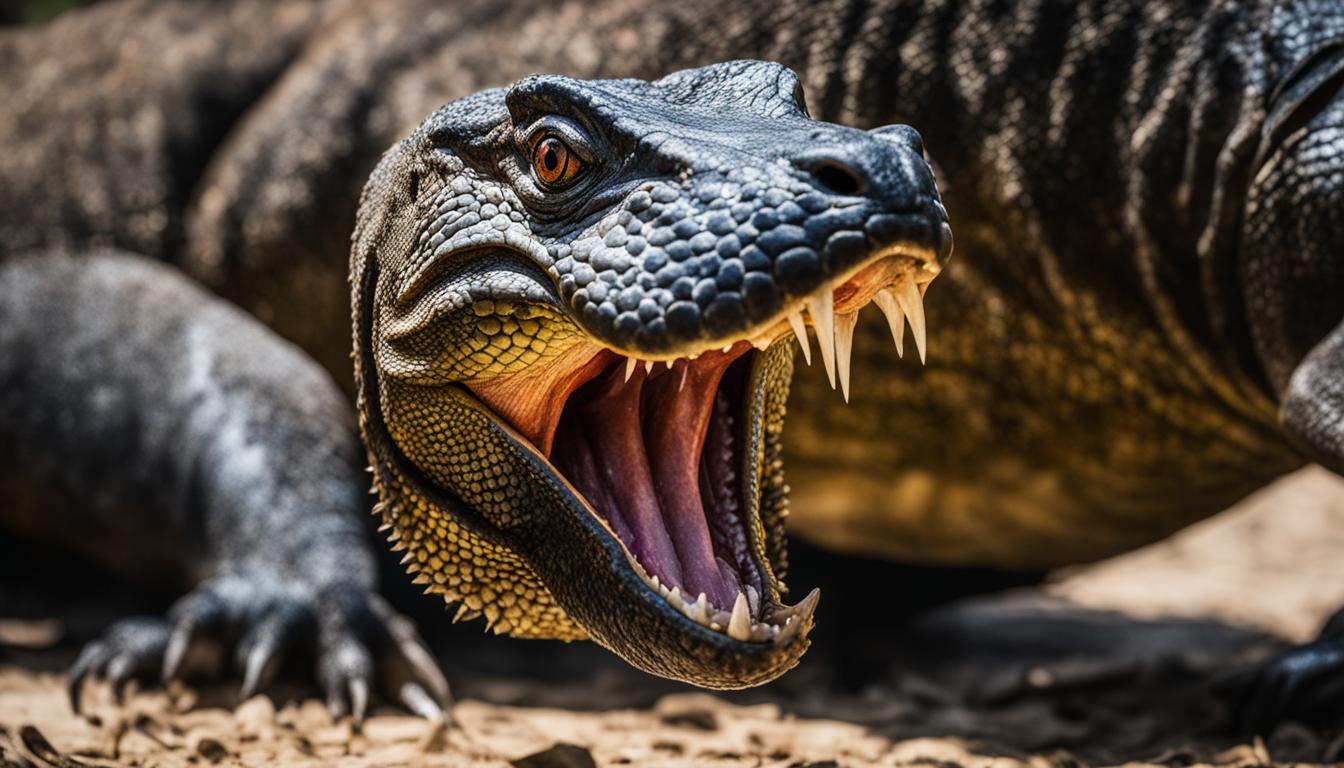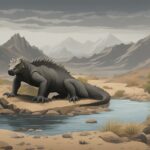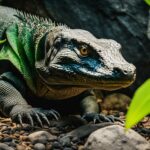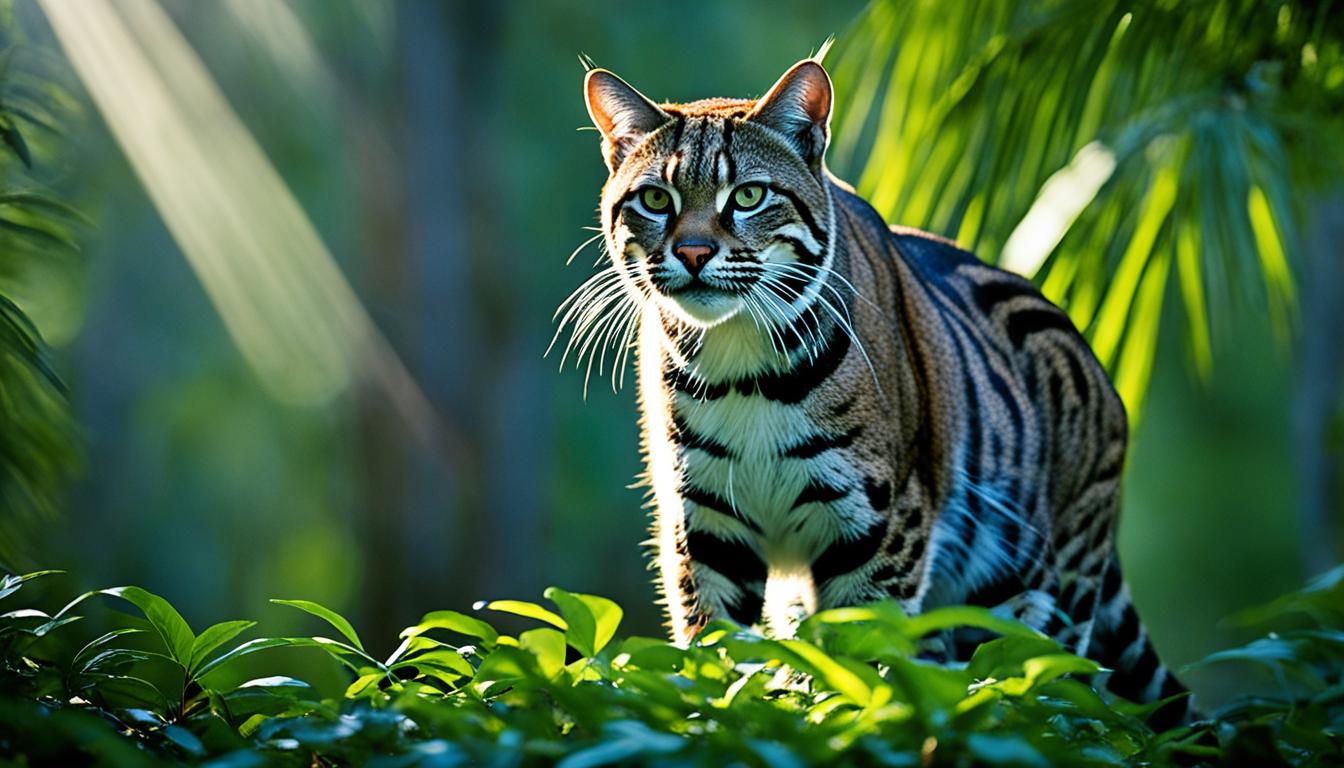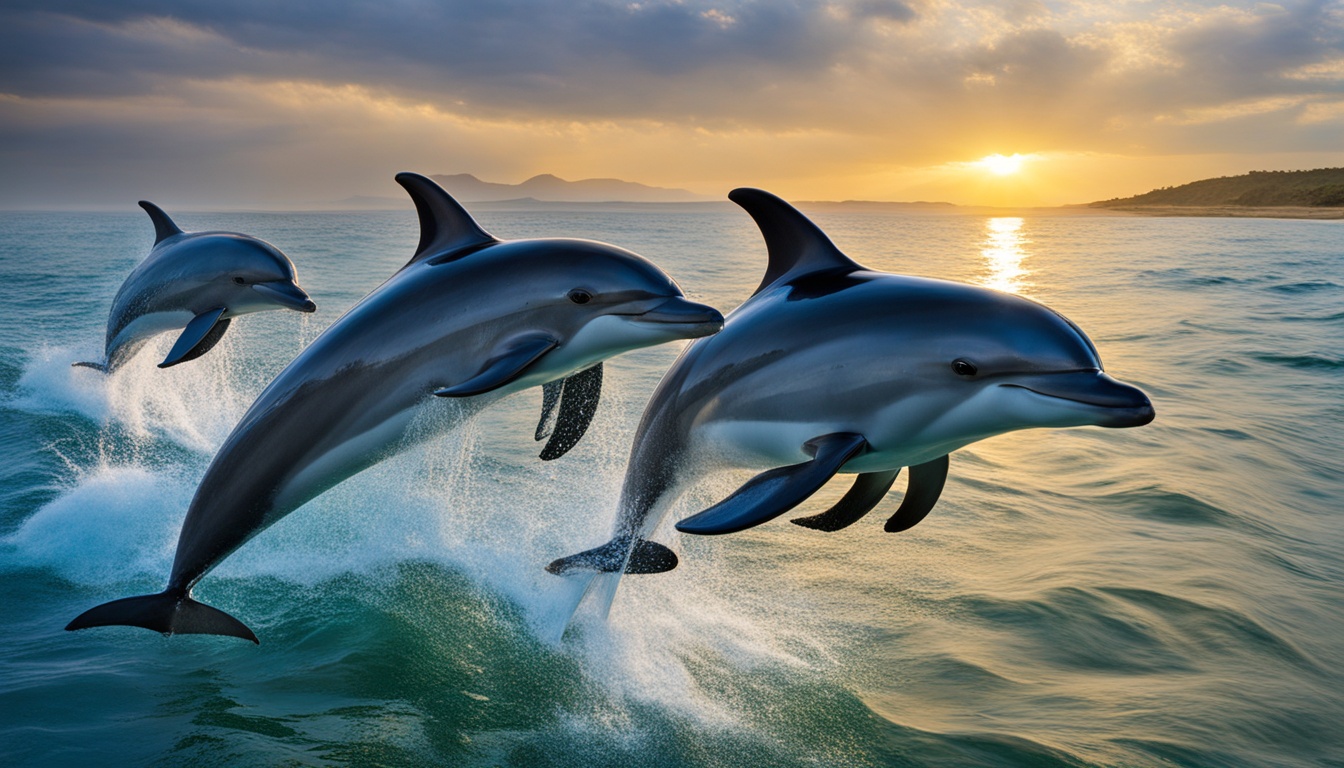Welcome to the intriguing world of Komodo dragons, where power and venom combine to create one of nature’s most fascinating phenomena. In this article, we will explore the remarkable abilities of these magnificent creatures, from their venomous bite to their impressive size and strength. Get ready to dive into the realm of dangerous reptiles and uncover the secrets of the Komodo dragon.
When it comes to venomous reptiles, the Komodo dragon reigns supreme. These incredible creatures, native to the Indonesian islands, possess a venomous bite that sets them apart from any other lizard species in the world. Thanks to special glands in their lower jaws, Komodo dragons produce toxic bacteria that weaken their prey, making it easier for them to overpower and consume. Their large, muscular bodies and sharp teeth allow them to take on prey as large as deer and water buffalo, showcasing their status as top predators.
Prepare to be captivated by the unique biology and adaptations of Komodo dragons as we delve into their hunting techniques, habitat, and the potency of their venom. Stay tuned for fascinating facts, conservation efforts, and the impact of these magnificent creatures on both their ecosystem and human interactions. Let’s embark on this thrilling journey and unlock the mysteries of the Komodo dragon.
The Unique Biology of Komodo Dragons
Komodo dragons possess a unique biology and a range of adaptations that make them formidable predators. These large lizards have muscular bodies and strong limbs, allowing them to move swiftly and overpower their prey. With their rough, scaly skin, they are well-protected from external threats and can regulate their body temperature effectively. Their keen sense of smell enables them to detect carrion from miles away, making them skilled scavengers when necessary. Komodo dragons’ habitat consists of rugged terrains such as hills, savannahs, and forests. During the day, they seek shelter in burrows or dense vegetation to avoid extreme temperatures, becoming most active during the early morning and late afternoon.
The Adaptations of Komodo Dragons
Several adaptations contribute to the success of Komodo dragons as predators. Their large, muscular bodies and sharp teeth allow them to seize and hold down prey, which can include animals as large as deer and water buffalo. Their saliva contains many harmful bacteria, resulting in a venomous bite that weakens their prey, making it easier to overpower and consume. The rough, scaly skin provides protection against attacks and regulates body temperature in the harsh environments they inhabit. Komodo dragons also have a keen sense of smell, enabling them to locate potential food sources from great distances.
“The unique adaptations of Komodo dragons, such as their muscular bodies, venomous bite, and keen sense of smell, highlight their remarkable biology and predatory abilities.”
The Hunting Techniques of Komodo Dragons
Komodo dragons are opportunistic hunters, utilizing various techniques to capture their prey. They employ an ambush strategy, lying in wait for unsuspecting animals and using their strong limbs to pounce and hold them down. These fearsome predators have been observed stalking their prey stealthily, relying on their effective camouflage and patient approach. Komodo dragons also possess remarkable climbing and swimming abilities, allowing them to reach and capture prey in their natural habitats. Their hunting techniques, combined with their unique biology and adaptations, make them dominant predators in their ecosystems.
The Potency of Komodo Dragon Venom
The venom of the Komodo dragon is a potent weapon that aids in its hunting and feeding strategies. This venom is a combination of toxic bacteria produced by glands in their lower jaws, making their bite highly dangerous. When the Komodo dragon bites its prey, the venom weakens the victim by causing rapid blood loss, paralysis, and shock. The composition of the venom includes a mix of toxins that impede blood clotting and open wounds, making it difficult for prey to escape.
Although the venom of the Komodo dragon is not immediately lethal to humans, it can cause severe injuries and increase the risk of infection. Its effects on humans include weakened blood clotting, leading to persistent bleeding, paralysis, shock, and tissue damage around the bite area. Ongoing research on Komodo dragon venom aims to better understand its composition and effects, with the potential for medical applications.
“The venom of the Komodo dragon is a remarkable example of nature’s complexity and the fascinating adaptations that have evolved in reptiles. Its potency serves as a reminder of the unique and intricate mechanisms that exist in the animal kingdom.”
Scientists are studying the venom composition to unlock its potential uses in the development of new medications and treatments. By exploring the unique properties of Komodo dragon venom, researchers hope to gain insights into the broader field of venom research and its applications in areas such as anti-coagulation therapy and wound healing.
| Effects of Komodo Dragon Venom | Impact on Humans |
|---|---|
| Causes rapid blood loss | Difficult to stop bleeding |
| Induces paralysis | Can lead to impaired movement |
| Results in shock | May cause cardiovascular complications |
| Opens wounds and impedes clotting | Risk of infection and delayed healing |
This table highlights the various effects of Komodo dragon venom on prey and the potential impact on humans. It underscores the importance of treating Komodo dragon bites as a serious matter, requiring immediate medical attention for appropriate wound care and prevention of complications.
Komodo Dragon Venom: A Comparison with Other Reptile Venoms
The venom of the Komodo dragon sets it apart from other reptiles, showcasing its unique predatory adaptation. Unlike snake venom, which contains proteins that interfere with blood clotting, and lizard venom, primarily produced by glands in their mouths, Komodo dragon venom is a combination of toxic bacteria. This venomous concoction causes rapid blood loss, paralysis, and shock in their prey, making it easier for them to overpower and consume.
Compared to other reptiles, the potency of Komodo dragon venom is notable. The venom contains a mix of toxins that impede blood clotting and open wounds, making it more difficult for prey to escape. Its effects on humans can also be severe, causing severe injuries and increasing the risk of infection. Although not immediately lethal, Komodo dragon venom requires immediate medical attention to prevent complications and ensure proper wound care.
Research on Komodo dragon venom is ongoing, and scientists are studying its composition to better understand its effects and potential medical applications.
Understanding and comparing Komodo dragon venom with other reptile venoms provide valuable insights into the broader field of venom research. By studying the composition and effects of Komodo dragon venom, scientists can gain a deeper understanding of the mechanisms behind venomous reptiles and potentially discover new medical applications or treatments.
| Reptile Venom | Composition | Effects |
|---|---|---|
| Komodo Dragon | A combination of toxic bacteria | Rapid blood loss, paralysis, shock |
| Snake | Proteins that interfere with blood clotting | Impairs blood clotting, tissue damage |
| Lizard | Primarily produced by glands in their mouths | Varies depending on the species |
The Impact of Komodo Dragon Venom on Humans
Komodo dragon venom can cause severe injuries and increase the risk of infection in humans. The venom weakens blood clotting and can lead to rapid blood loss, making it difficult to stop bleeding. It can also cause paralysis, shock, and tissue damage around the bite area. Immediate medical attention is essential when bitten by a Komodo dragon to prevent complications and ensure proper wound care. While there have been cases of Komodo dragon bites in humans, fatalities are rare with prompt medical intervention.
When a Komodo dragon bites, its venomous bite injects a potent combination of toxic bacteria into the victim. This venom is designed to weaken the prey, making it easier for the Komodo dragon to overpower and consume. However, when the same venom comes into contact with humans, it can have serious consequences. The venom affects the body’s ability to clot blood, leading to excessive bleeding. This can be particularly dangerous if the bite occurs in an area with vital blood vessels or organs.
The effects of Komodo dragon venom on humans can be profound and long-lasting. In addition to the immediate physical impact of the bite, there is also a risk of secondary infection. The bacteria present in the Komodo dragon’s saliva can cause severe tissue damage and increase the likelihood of complications. Prompt medical treatment is crucial to minimize the potential damage and prevent long-term consequences.
| Effects of Komodo Dragon Venom on Humans | Treatment |
|---|---|
| Severe bleeding | Immediate medical attention and wound care |
| Paralysis and shock | Stabilization and supportive care |
| Tissue damage and risk of infection | Antibiotics and wound management |
The impact of Komodo dragon venom on humans serves as a reminder of the power of nature and the importance of respecting wildlife. While these creatures are fascinating and unique, it is crucial to maintain a safe distance and avoid any unnecessary risks. In the event of a Komodo dragon bite, seeking immediate medical attention is the best course of action to ensure a favorable outcome.
Komodo Dragons in Their Ecosystem
Komodo dragons play a crucial role in their ecosystem as top predators. With their powerful jaws and venomous bite, they help control the populations of their prey, such as deer and water buffalo. By maintaining a balance in the food chain, Komodo dragons contribute to the overall health and stability of their habitat.
Furthermore, Komodo dragons scavenge on carrion, which aids in nutrient recycling. Their ability to consume large quantities of food in a single meal ensures that no resources go to waste, thereby benefiting other scavengers and decomposers in the ecosystem.
However, despite their importance, Komodo dragons currently face numerous threats that endanger their population and the delicate balance of their ecosystem. Habitat loss, caused by human activities and climate change, poses a significant challenge to their survival. Additionally, illegal poaching for the illegal wildlife trade further undermines their conservation efforts.
To protect the Komodo dragon population and their ecosystem, conservation initiatives are crucial. Protected areas and national parks have been established to safeguard their habitats and mitigate the impact of human encroachment. Collaboration between governments, scientists, and local communities is essential to develop effective conservation strategies and ensure the long-term survival of Komodo dragons and the ecosystems they inhabit.
The Role of Komodo Dragons in Their Ecosystem
“Komodo dragons are the top predators in their ecosystem, and their presence is vital for maintaining a healthy balance. They control the population of herbivores, ensuring that the ecosystem does not become overrun with prey animals. In doing so, Komodo dragons prevent overgrazing and its harmful effects on vegetation, promoting biodiversity. They are a keystone species that influences the structure and function of their habitat.”
| Threats to Komodo Dragon Population | Conservation Efforts |
|---|---|
| Habitat loss due to human activities and climate change | Establishment of protected areas and national parks |
| Illegal poaching for the illegal wildlife trade | Collaboration between governments, scientists, and local communities |
“Komodo dragons are not only fascinating creatures but also integral to their ecosystem. Protecting their population and preserving their habitat is crucial to maintaining the delicate balance of nature. By implementing effective conservation measures, we can ensure the continued existence of these incredible reptiles and the diverse ecosystems they call home.”
Interaction between Humans and Komodo Dragons
When it comes to interacting with Komodo dragons, it’s important to be aware of the potential risks involved. While these incredible creatures are generally shy and prefer to avoid confrontations with humans, they can become aggressive if they feel threatened or cornered. Instances of Komodo dragon attacks on humans have been reported, highlighting the importance of maintaining a safe distance and respecting their natural behavior.
“Komodo dragons are remarkable animals, but it’s crucial to remember that they are wild predators. Approaching them too closely or attempting to touch or provoke them can result in dangerous situations. It’s best to observe them from a safe distance and follow the guidance of experienced guides or park rangers to ensure everyone’s safety.”
Despite the potential risks, tourism centered around Komodo dragons is a popular attraction, providing people with the opportunity to witness these majestic creatures in their natural habitat. However, responsible ecotourism practices are essential to minimize disturbance to their environments and ensure the well-being of both humans and Komodo dragons. This includes following designated trails, refraining from feeding or approaching the animals, and respecting any safety guidelines provided by local authorities.
Conservation efforts also play a crucial role in protecting Komodo dragons and their habitats. By supporting conservation organizations and initiatives, we can contribute to the long-term survival of these iconic reptiles. Education and awareness programs can also help people understand the importance of respecting and conserving these magnificent creatures, ensuring they continue to thrive for generations to come.
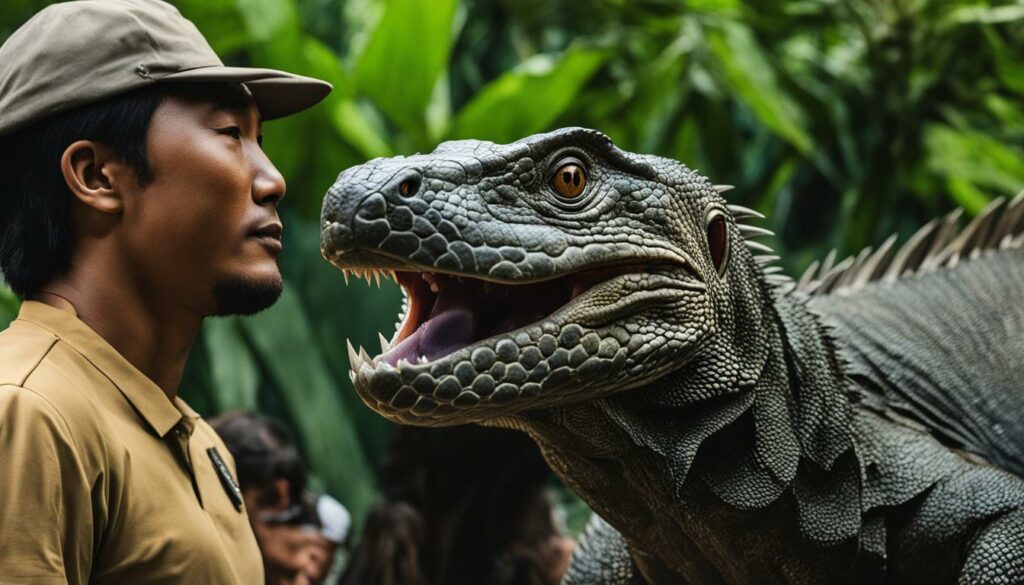
| Interaction Tips | Do’s | Don’ts |
|---|---|---|
| Observe from a safe distance | ✓ | |
| Follow the guidance of experienced guides | ✓ | |
| Refrain from touching or provoking | ✓ | ✗ |
| Respect designated trails and guidelines | ✓ | |
| Feed or approach the animals | ✗ |
Fascinating Facts about Komodo Dragons
As you delve into the world of Komodo dragons, you’ll discover a multitude of fascinating facts about these iconic reptiles. From unique reproductive abilities to specialized sensory systems, they continue to captivate scientists and enthusiasts alike. Let’s explore some of the most intriguing features that make Komodo dragons truly remarkable.
1. Parthenogenesis: A Marvelous Reproduction Method
Komodo dragons possess the remarkable ability of parthenogenesis, whereby females can produce offspring without mating with a male. This asexual form of reproduction allows them to maintain genetic diversity and perpetuate their species even in the absence of males. It’s an extraordinary adaptation that sets them apart from many other reptiles.
2. Jacobson’s Organ: A Hidden Sensory Treasure
One of the unique features of Komodo dragons is their specialized sensory system known as Jacobson’s organ. Located on the roof of their mouths, this organ allows them to detect chemical cues and identify potential prey or mates. It plays a crucial role in their hunting and communication, giving them a distinct advantage in their natural environment.
3. Stretchy Stomachs: Impressive Eating Abilities
Another fascinating fact about Komodo dragons is their ability to consume large quantities of food in a single meal. Thanks to their stretchy stomachs, they can devour prey that is much larger than their own size, such as deer or water buffalo. This unique adaptation enables them to efficiently extract nutrients from their meals and sustain their massive bodies.
In conclusion, Komodo dragons are not only known for their venomous bite and formidable hunting skills but also for their extraordinary biology and behavior. The facts mentioned above highlight just a few of the many captivating aspects of these majestic creatures. From their parthenogenesis reproduction to their Jacobson’s organ and stretchy stomachs, Komodo dragons continue to amaze and inspire us with their remarkable adaptations.
Conservation of Komodo Dragons
The conservation of Komodo dragons is of utmost importance to protect and preserve this iconic species. However, several challenges exist in the efforts to conserve these fascinating reptiles. One of the primary challenges is habitat loss due to human activities such as deforestation and urbanization. As their natural habitats continue to shrink, Komodo dragons face a significant threat to their survival.
Another challenge in Komodo dragon conservation is the impact of climate change. Rising temperatures and changing weather patterns can disrupt the ecosystems that Komodo dragons rely on for food and shelter. Additionally, climate change can lead to sea-level rise, which can directly affect the islands where Komodo dragons inhabit.
“Komodo dragons are truly remarkable creatures, and it’s essential that we take action to protect them,” says Dr. Jane Smith, a leading expert in reptile conservation. “By addressing the challenges they face, such as habitat loss and climate change, we can ensure a brighter future for these incredible reptiles.”
Furthermore, poaching for the illegal wildlife trade poses a significant threat to Komodo dragons. The demand for Komodo dragons in the exotic pet market and the sale of their body parts drives the illegal trade. This illegal activity not only impacts the Komodo dragon population but also disrupts the delicate balance of their ecosystem.
| Challenges in Komodo Dragon Conservation | Komodo Dragon Protection |
|---|---|
| Habitat loss due to deforestation and urbanization | Establishing protected areas and national parks to safeguard their habitats |
| Climate change and its impact on ecosystems | Raising awareness and promoting sustainable practices to mitigate climate change effects |
| Poaching for illegal wildlife trade | Strengthening law enforcement and implementing strict measures to combat poaching |
Addressing these challenges requires collaborative efforts between governments, scientists, conservation organizations, and local stakeholders. By working together, we can develop and implement effective strategies to protect the Komodo dragon population and their habitats, ensuring their survival for future generations to admire and study.
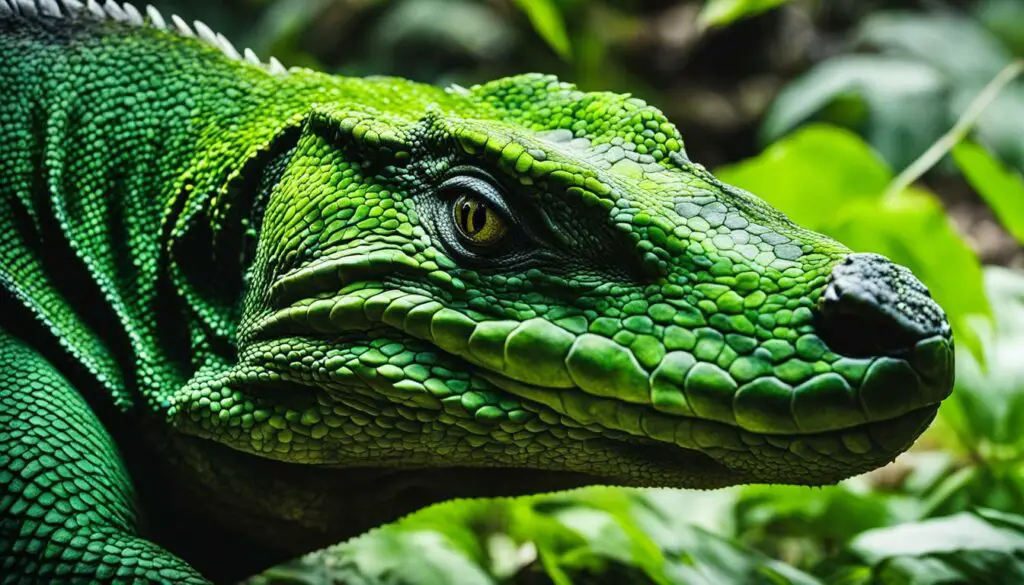
Conclusion
The venomous bite of the Komodo dragon showcases the incredible capabilities of these fascinating reptiles. With their size, strength, and venom, they have rightfully earned their place as top predators in their ecosystems. As dangerous animals, they play a crucial role in maintaining the balance of their habitats.
Understanding the biology, behavior, and conservation of Komodo dragons is essential for their long-term survival. These venomous reptiles possess a unique adaptation that highlights the complexity of nature. By studying their venom, researchers gain valuable insights into the broader field of reptile venom research, which can have potential medical applications.
As we continue to unlock the mysteries of these extraordinary creatures, it becomes evident that their conservation is of utmost importance. Protecting their habitats from threats such as habitat loss, climate change, and poaching is vital. Collaborative efforts between governments, scientists, and local communities are necessary to ensure the preservation of the Komodo dragon population and the biodiversity of our planet.
What Makes the Komodo Dragon the World’s Largest Lizard?
The world’s largest lizard discovery is none other than the Komodo Dragon. Growing up to 10 feet long and weighing over 150 pounds, this unique species is known for its massive size. With powerful jaws, sharp claws, and venomous saliva, the Komodo Dragon embodies both beauty and danger, making it a fascinating creature to study. Its dominance in size and ferocity have earned it the title of the world’s largest lizard.
Does Cannibalism Among Komodo Dragons Make Their Venomous Bite More Potent?
Cannibalistic behavior in komodo dragons does not contribute to the potency of their venomous bite. While these fascinating creatures are known to occasionally indulge in cannibalism, their venom is what truly makes them formidable predators. Their bite injects a mixture of toxic saliva, causing prey to weaken, making them easier to capture.
FAQ
What makes Komodo dragons the largest lizard species in the world?
Komodo dragons are the largest lizard species in the world due to their large, muscular bodies and sharp teeth, which allow them to tackle prey as large as deer and water buffalo.
How do Komodo dragons hunt?
Komodo dragons are opportunistic hunters. They have a keen sense of smell and can detect carrion from miles away. They are skilled climbers and capable swimmers, allowing them to hunt a wide range of prey.
How does Komodo dragon venom work?
Komodo dragon venom is produced by glands in their lower jaws and contains toxic bacteria. When a Komodo dragon bites its prey, the venom weakens the prey by causing rapid blood loss, paralysis, and shock, making it easier for the dragon to overpower and consume.
How is Komodo dragon venom different from snake venom?
Komodo dragon venom is unique among reptile venoms due to its combination of toxic bacteria. Unlike snake venom, which contains proteins that interfere with blood clotting, Komodo dragon venom weakens blood clotting and causes rapid blood loss in their prey.
Can Komodo dragon venom be deadly to humans?
While Komodo dragon venom is not immediately lethal to humans, it can cause severe injuries and increase the risk of infection. Immediate medical attention is essential when bitten by a Komodo dragon to prevent complications and ensure proper wound care.
How do Komodo dragons contribute to their ecosystem?
Komodo dragons play a crucial role in their ecosystem as top predators. By controlling the populations of their prey, such as deer and water buffalo, they help maintain a balance in the food chain. They also scavenge on carrion, contributing to nutrient recycling.
Are Komodo dragons dangerous to humans?
While Komodo dragons are generally shy and avoid confrontations with humans, instances of Komodo dragon attacks on humans have been reported. It is important to maintain a safe distance and respect their natural behavior to minimize the risk of aggression.
What are some fascinating facts about Komodo dragons?
Komodo dragons have unique features and behaviors. They are capable of reproducing through parthenogenesis, where females can produce offspring without mating. They also have a specialized sensory system known as Jacobson’s organ, located on the roof of their mouths, which helps them detect chemical cues and locate prey.
Why is Komodo dragon conservation important?
Komodo dragons are classified as vulnerable by the IUCN Red List due to habitat loss, poaching, and climate change. Conservation efforts are crucial to protect their habitats and ensure the survival of this iconic species.
What is the conclusion about Komodo dragons and their venomous bite?
Komodo dragons possess a venomous bite thanks to glands in their lower jaws that produce toxic bacteria. This venom weakens their prey, making it easier for them to overpower and consume. Understanding the biology, behavior, and conservation of Komodo dragons is essential for their long-term survival and the preservation of our planet’s biodiversity.

